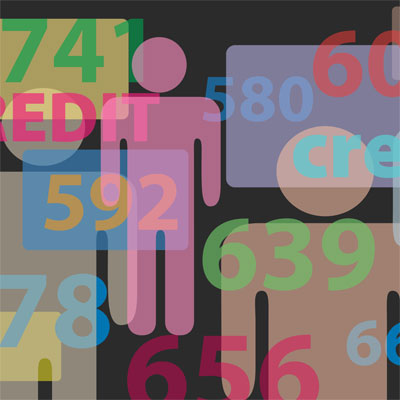What Your Credit Score Actually Means
 700, 620, 800 — what do these numbers mean and how do they affect your credit rating? To understand your credit score, you first need to understand how lenders evaluate your creditworthiness. There are typically three factors that a lender looks at to get an overall picture of the risk involved with issuing you a line of credit. They are commonly known as the “three C’s.”
700, 620, 800 — what do these numbers mean and how do they affect your credit rating? To understand your credit score, you first need to understand how lenders evaluate your creditworthiness. There are typically three factors that a lender looks at to get an overall picture of the risk involved with issuing you a line of credit. They are commonly known as the “three C’s.”
Character – A lender uses your past debts and credit history to determine your credit character. Your past actions create a picture of your overall honesty and reliability when it comes to repaying debts. Some factors that may be taken into consideration include:
- Do you have any credit history?
- Do you pay your bills on time?
- What type of negative credit factors do you have?
- How often have you requested credit?
- How long have you lived at your current address?
- How long have you been at your current job?
Capital – Your capital is the value of the assets you own such as real estate, personal property, investments or savings. This is basically used to determine collateral for the loan you are asking to receive.
Capacity – A lender needs to know that not only are you currently able to have the financial capacity to repay the loan, but to what degree you can repay it in the future. Here are some factors that lenders may use to determine whether you can you realistically repay the debt.
- What is your current income?
- How long have you been employed in your current position?
- What other loans are you currently carrying?
- What are your current living expenses?
- What other debts do you have?
- What type of cash reserves do you have?
While this is extensive and practical information for any lender to look over, it’s not enough to paint a full picture. This is where your actual credit score comes in. Since credit reports cover a long list of your payment and credit history, they are a true picture of your spending habits and your ability to repay your debts. All of this data is analysed and, based on your information, you are given an overall credit score. The higher the number, the better your credit. Most financial experts will agree that a score around the mid 700s and above can be ranked as a good credit score.
The problem with your credit score, however, is that there are three major credit reporting agencies and they all report a little differently. To combat these discrepancies, most lenders use a third-party score, called your FICO score, to give an accurate representation of your credit score. While there are numerous factors that contribute to this score, FICO has released these five key areas you should be aware of.
35% of your FICO credit score is determined by payment history.
Lenders want to know that you are not only going to pay your bill, but that you will also pay it on time. Late payments on bills reporting to credit agencies will cause your score to drop, while on-time payments will improve it.
30% of your FICO credit score is determined by credit utilization.
Utilization is the ratio of how much credit you have used to the your credit limit. You want to keep this number well below 30%. Things to watch out for are decreased limits you may not have been aware of and any charges the credit company may put on your bill such as yearly fees.
15% of your FICO credit score is determined by the length of your credit history.
Longer credit history can result in an improved score because long-term patterns of spending can be better determined. When looking at this factor, your FICO Score takes into account:
- how long your credit accounts have been established, including the age of your oldest account, the age of your newest account and an average age of all your accounts
- how long specific credit accounts have been established
- how long it has been since you used certain accounts
10% of your FICO credit score is determined by the types of credit in use.
This is really to determine if you have multiple sources of credit. For instance, do you have installment, revolving, consumer finance or mortgage payments? A varied mix of credit types can result in higher scores.
10% of your FICO credit score is determined by new credit.
Opening several new accounts in a short period of time can have a negative risk on your credit score. This is especially true for individuals with a shorter credit history. Since the accounts are new, they don’t have an established pattern of credit behavior and are more difficult to judge. If you need to apply for a loan for something, avoid opening up other lines of credit that may drop your score beforehand.


Latestpost
14
Jul
Factors That Can Help First-Time Borrowers Establish Credit
It is one thing to have bad credit in today’s wo ...

Download our
FREE GUIDE
and get weekly money-savings tips!
KnowledgeBase
Essentials




